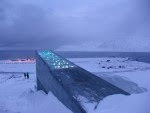
Indigenous Leaders Bring Eco-Sense to UN
UNITED NATIONS, (OneWorld) - If one is serious about addressing the climate change crisis, it might be wise to listen to those who have close and intimate knowledge of the lands and waters.
"Mother Earth is crying," says Carrie Dann, an elder of the Western Shoshone indigenous people of the United States. "She is crying because she is wounded."
Sharing Dann's concerns about the continued abuse of natural resources for commercial gains, Victoria Tauli-Corpuz, a leader of the native peoples of the Philippines, adds: "It's time to stop this senselessness."
Both Dann and Tauli-Corpuz are currently attending the sixth annual meeting of the UN Permanent Forum on Indigenous Peoples, which has brought together more than 1,000 indigenous representatives from as many as 70 countries.
The indigenous leaders say their communities are least responsible for the destruction of the Earth's natural environment. Yet, whether living in the high Himalayas or on the shores of the Caribbean, in the snow-covered Arctic region or in the Pacific islands, native populations are disproportionately affected by climate change.
The loss of land and natural resources, they explain, has forced many communities to move to urban areas where they find it increasingly hard to engage in their traditional practices and live according to their belief systems.
"Removed from our land we are already removed from ourselves," says Mick Dodson, an Australian aboriginal leader and member of the UN Permanent Forum.
Experts on science and biodiversity now widely acknowledge that indigenous peoples' traditional knowledge about plant and animal species is vital to scientific understanding of how to preserve natural resources.
"Nature conservation is at the heart of the cultures and values of traditional societies," says Ahmed Djoghlaf, executive secretary of the UN Convention on Biodiversity.
The biodiversity treaty, which has been signed or ratified by 190 countries, not only recognizes the significance of traditional knowledge, but also asserts the need to respect and maintain indigenous innovations.
Though appreciative of the objectives laid out in the treaty, indigenous leaders say they lament the fact that the world body has failed to recognize their right to exercise full control over their traditional lands and resources.
"Although in recent decades some progress has been made in the area of legal recognition of indigenous peoples' right to the protection of their lands, territories, and natural resources," notes Tauli-Corpuz, "in practical terms, this recognition has not translated into reality."
Threats to indigenous peoples' lands and territories, according to Tauli-Corpuz, include such things as mineral extraction, logging, toxic contamination, privatization, and development projects, as well as the use of genetically modified seeds and technology.
Last year, when the UN General Assembly met in September, many had raised hopes that it would unanimously endorse the draft declaration on the universal rights of the world's indigenous peoples, but that did not happen.
Though already approved by the UN Human Rights Council, the United States, Canada, Australia, and some other nations refused to accept the text because it included a clause calling for the recognition of indigenous peoples' right to self-determination.
Indigenous leaders say unless the world body recognizes their peoples' right to self-determination, international efforts to reverse the loss of biodiversity and overcome the challenges of climate change will remain futile because their resources will continue to be exploited by private businesses.
Most of the world's natural resources are found within indigenous peoples' traditional territories, where multinational corporations are allowed by governments to engage in logging, mining, and other operations that contribute to environmental degradation and climate change.
In most cases, according to indigenous leaders, such operation take place without the prior and informed consent of the native communities who are most knowledgeable about their immediate environment and the animal and plant species that surround their lives.
A recent UN study points out that since appearing on Earth, human beings have never destroyed the web of life as much as during the past 50 years, substantiating the concerns raised by indigenous leaders here.
In fact, according to the 2007 UN Millennium Ecosystem Assessment report, which involved more than 1,300 scientists from 95 countries, before the industrial era, nearly 47 percent of the Earth's land surface was covered with forests; today the planet is left with only 10-percent forest coverage.
The report shows that every year at least 10 million hectares of the world's forest are lost to unsustainable modes of economic development.
These forests are home to about 80 percent of plant and animal species. Most are also home to a significant population of indigenous people, who have intimate knowledge about other forms of life around them.
"The link between biodiversity and traditional knowledge is evident," says Djoghlaf, in whose view the Earth is a "spiritual mother who not only gives life and therefore food, but also provides the cultural and spiritual identity of its occupants."
Believing that indigenous peoples' dependence on the sustainable management and use of biological sources "can protect and enhance" biodiversity, he adds: "Their cultures and cosmo-visions are therefore essential in the global effort to halt biodiversity loss and natural habitat destruction."
Haider Rizvi, OneWorld US May 18, 2007
~LISTEN~
~MAKE A DIFFERENCE~TAKE THE LEAP!
AWAKEN TO PEACE AND LOVE
TARA











